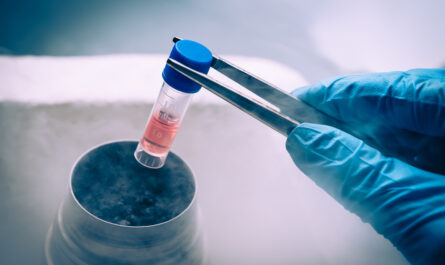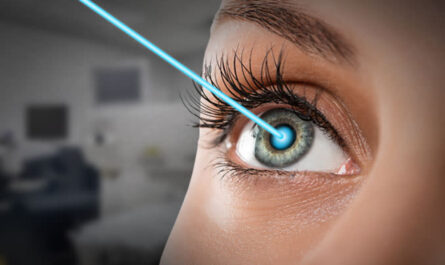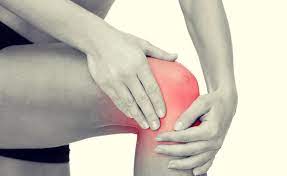
Cardiac implants have revolutionized the treatment of heart diseases over the past few decades. From pacemakers to stents to artificial hearts, these devices have improved quality of life for millions of people worldwide. In this article, we explore some of the major cardiac implants available today and how they are positively impacting heart healthcare.
Pacemakers
One of the most common and well-established cardiac implants is the pacemaker. Pacemakers are battery-powered devices that are implanted under the skin to regulate an abnormal heartbeat. They work by sending small electrical signals to correct an irregular heartbeat and restore it to a healthy rhythm. According to estimates, over 5 million people worldwide currently have a pacemaker, making them one of the most widely used cardiac implants.
There are different types of pacemakers available depending on the needs of the patient. Single-chamber pacemakers stimulate only one of the heart’s chambers (atria or ventricles), while dual-chamber pacemakers stimulate both. Biventricular pacemakers are used to treat heart failure by coordinating the contraction of both ventricles. The latest generations of pacemakers are MRI-compatible, allowing recipients to safely undergo MRI scans. Advancements have also led to smaller pacemakers with longer battery lives. Overall, pacemakers have prolonged and improved quality of life for millions suffering from arrhythmias.
Cardiac Resynchronization Therapy
Another major cardiac implant is cardiac resynchronization therapy or CRT. Also known as biventricular pacing, CRT aims to coordinate the contraction of both ventricles of the heart which often become uncoordinated in heart failure patients. It works via a pacemaker that delivers electrical stimulation to both ventricles of the heart rather than just one to help the heart pump properly.
CRT has been shown to significantly reduce symptoms of heart failure like shortness of breath, fatigue, and swelling. It is estimated to reduce the risk of death from heart failure by 20-35% and helps reduce hospitalizations as well. The therapy is delivered via a CRT pacemaker or CRT defibrillator device that is surgically implanted in the chest. Candidates for CRT include those with moderate to severe heart failure symptoms and cardiac dyssynchrony seen on echocardiogram or MRI scans. Like pacemakers, CRT devices have also become smaller and more powerful over the years.
Stent Implants
Coronary stent implants have revolutionized the treatment of coronary artery disease. A coronary stent is a small, expandable mesh tube that is inserted via arteries to open up blocked parts of the coronary arteries and improve blood flow to the heart. Stents are usually placed using a minimally invasive cardiac catheterization procedure. Some key benefits of coronary stents include:
– Immediate restoration of blood flow – Stents mechanically open narrowed arteries and provide support to help keep them open. This immediately relieves chest pain from blocked arteries.
– Reduced need for bypass surgery – In many cases, stents can treat coronary artery blockages without the need for open-heart bypass surgery.
– Improved survival – Stents have been shown to significantly reduce the risk of future heart attacks in comparison to traditional treatments like angioplasty alone.
– Durable results – Modern drug-eluting stents coated with medications have shown durable effectiveness over 5-10 years in preventing reblockage of arteries.
Overall, coronary stenting has allowed millions of patients to avoid major surgery for coronary issues and successfully treat arterial blocks.
Artificial Hearts and Ventricular Assist Devices
For patients with advanced heart failure waiting for a heart transplant, ventricular assist devices (VADs) and temporary artificial hearts are life-saving options. A VAD is a long-term mechanical pump that helps the failing heart pump blood through the body. It is connected to a power source and controller worn outside the body.
Some VADs completely take over the pumping function, allowing both ventricles to rest. Others like the left ventricular assist device (LVAD) only help pump blood from the left ventricle. VADs have allowed many patients with end-stage heart failure to return to an active life while waiting for transplant. Emerging miniaturized continuous-flow LVAD devices have also shown effectiveness similar to heart transplantation.
Similarly, temporary artificial hearts are implanted to take over the pumping function of a damaged heart until it can recover or a donor heart becomes available. The SynCardia Total Artificial Heart is currently the only FDA-approved total artificial heart. It has enabled bridging to transplant for hundreds of patients, buying them time until a donor heart arrives.
Moving Forward
Cardiac implant technology continues to innovate and provide new treatment options for heart disease patients. Areas seeing active research include bioresorbable stents that dissolve in the body after artery healing, drug-device combinations to prevent stent blockages, wireless pacemakers and defibrillators, miniaturized VADs, and wearable artificial hearts. Clinical trials also aim to expand the role of implants in new areas like diastolic heart failure. Overall, cardiac implants offer immense hope to the millions suffering from heart disease worldwide by improving survival and quality of life. As technology evolves further, they promise to revolutionize cardiac care even more in the coming decades.
*Note:
- Source: Coherent Market Insights, Public sources, Desk research
2. We have leveraged AI tools to mine information and compile it


